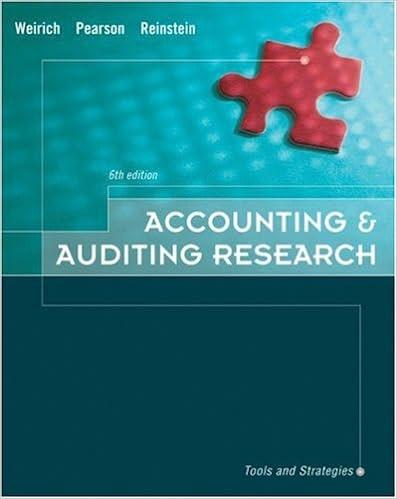Question
APPENDIX 4 It is very important to adhere to the companys current accounting policies regarding the recording and valuation of inventory. As was the practice
APPENDIX 4
It is very important to adhere to the companys current accounting policies regarding the recording and valuation of inventory. As was the practice for many years ago, we are using the periodic inventory system to maintain inventory records as well as valuing the year-end based on the lower of cost or market value (LCM) technique. In determining inventory cost, we use the first in first out cost flow assumption. This is to ensure consistency of accounting treatment unless a change of accounting method is appropriately justified. However, during the internal audit at year-end, the following findings about inventory were discovered. - An error of omission on the value of inventory on hand for one of our products Nike sports shoes (a new product traded during the year) was made. However, the related purchases and sales have been appropriately accounted for and displayed in the unadjusted trial balance. Product Nike sports shoes information is shown below:

Appendix 4 (Contd) - No material variation of market value from inventory cost was found as per assessing LCM technique. - The company overlooked including purchased goods worth BD8,600, which were in transit (FOB shipping point). Additionally, they failed to include inventory in transit (FOB destination) that had been sold at a cost of BD9,500. Nevertheless, the sales amount of BD10,400 was correctly recorded in the company's books. Initially, the closing inventory value of BD55,400 was determined by conducting an inventory count at year-end. - The company acted as a consignee for Sunshine Co, the consignor. This resulted in including the inventory goods held on consignment costing BD14,000.
\begin{tabular}{|l|l|l|l|} \hline Date & Activities & Units Acquired at Cost & Units Sold at Retail \\ \hline Jan-01 & Beginning inventory & Nil & \\ \hline Jan-15 & Purchase & 140 units @ BD 10 & \\ \hline Feb-05 & Sales & & 125 units @ BD30 \\ \hline Mar-18 & Purchase & 230 units @ BD14 & \\ \hline May-20 & Sales & & 150 units @ BD50 \\ \hline Aug-31 & Purchase & 545 units @ BD20 & \\ \hline Nov-06 & Sales & & 590 units @ BD45 \\ \hline Dec-05 & Purchase & 250 units @BD19 & \\ \hline \end{tabular} \begin{tabular}{|l|l|l|l|} \hline Date & Activities & Units Acquired at Cost & Units Sold at Retail \\ \hline Jan-01 & Beginning inventory & Nil & \\ \hline Jan-15 & Purchase & 140 units @ BD 10 & \\ \hline Feb-05 & Sales & & 125 units @ BD30 \\ \hline Mar-18 & Purchase & 230 units @ BD14 & \\ \hline May-20 & Sales & & 150 units @ BD50 \\ \hline Aug-31 & Purchase & 545 units @ BD20 & \\ \hline Nov-06 & Sales & & 590 units @ BD45 \\ \hline Dec-05 & Purchase & 250 units @BD19 & \\ \hline \end{tabular}
Step by Step Solution
There are 3 Steps involved in it
Step: 1

Get Instant Access to Expert-Tailored Solutions
See step-by-step solutions with expert insights and AI powered tools for academic success
Step: 2

Step: 3

Ace Your Homework with AI
Get the answers you need in no time with our AI-driven, step-by-step assistance
Get Started


